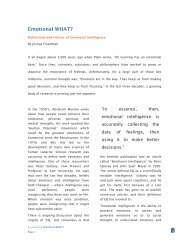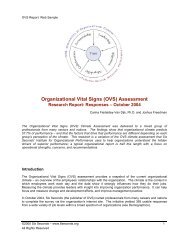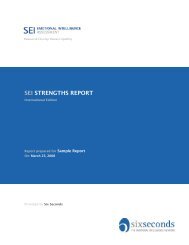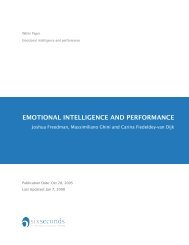Of Kwanzaa, Cinco de Mayo, and Whispering: The Need for ...
Of Kwanzaa, Cinco de Mayo, and Whispering: The Need for ...
Of Kwanzaa, Cinco de Mayo, and Whispering: The Need for ...
You also want an ePaper? Increase the reach of your titles
YUMPU automatically turns print PDFs into web optimized ePapers that Google loves.
576 Anthropology & Education Quarterly Volume 28,1997addition of multicultural events <strong>and</strong> heroes, even though scholars agreethat multicultural education should be much more than "add cultures<strong>and</strong> stir" (Arvizu <strong>and</strong> Saravia-Shore 1990). At King High, these verysuperficial attempts at multicultural education actually exacerbatedgroup conflict, but I suggest that a truly multicultural education with afocus on process <strong>and</strong> boundaries could alleviate interethnic tensions.Twenty years ago, Cortes said that although multicultural educationshould be more than isolated events <strong>and</strong> units, their addition was apositive first step.<strong>The</strong> recognition of ethnic groups through school events <strong>and</strong> the study of singleethnic groups through special units <strong>and</strong> courses has been a valuable <strong>and</strong> longoverdue addition to our educational process... they have intrinsic value <strong>and</strong>...they provi<strong>de</strong> the cutting edge of multicultural educational re<strong>for</strong>m. [Cortes1977:39]Most schools have not gone beyond this first step. Moreover, this firststep, in isolation, is not only ina<strong>de</strong>quate, but it is actually dangerous. AsHanna warns, "Besi<strong>de</strong>s the lack of evi<strong>de</strong>nce that multicultural educationprograms do what they are supposed to do, multicultural programs mayhave uninten<strong>de</strong>d consequences" (1994:72). Token multicultural educationcan inflame interethnic resentments, surely an uninten<strong>de</strong>d consequence.In her case study of the implementation of a multicultural"school within a school," Ulichny found that multiculturalism in practicemeant "different foods, festivals, <strong>and</strong> '<strong>for</strong>eign' languages," insteadof "an exploration of societal patterns of discrimination <strong>and</strong> inequalitythat are based on class, race, <strong>and</strong> place of origin" (1996:343). <strong>The</strong> emphasison cultural heritage worsened interethnic relations because stu<strong>de</strong>ntsof some ethnic groups were resentful of those who seemed to have amonopoly on "culture."I suggest that instead of starting from the "special events" approach,we rework the mo<strong>de</strong>l of multicultural education. Successful multiculturaleducation requires an analysis of the dynamics of stu<strong>de</strong>nt relationsacross all ethnic groups—"minority" <strong>and</strong> "majority"—<strong>and</strong> must beginwith the particular culture of each school, as well as encompass broa<strong>de</strong>rsocietal patterns of access to power <strong>and</strong> privilege. Some scholars haveargued <strong>for</strong> a <strong>de</strong>epening of multicultural education toward whatMcCarthy calls "critical multiculturalism,... a process that goes beyond'inclusivit/ <strong>and</strong> emphasizes relationality <strong>and</strong> multivocality" (1993:290).As I will explain later, I prefer the term intercultural education to <strong>for</strong>egroundthe relationships between <strong>and</strong> the diversity within ethnicgroups.Ethnographic Setting <strong>and</strong> Research MethodsKing High is located in Pineview, a large city in Cali<strong>for</strong>nia. Pineviewis a poor city, <strong>and</strong> King High has the highest concentration of low-incomestu<strong>de</strong>nts of any Pineview high school. 7 <strong>The</strong> ethnic makeup of the stu<strong>de</strong>nts










